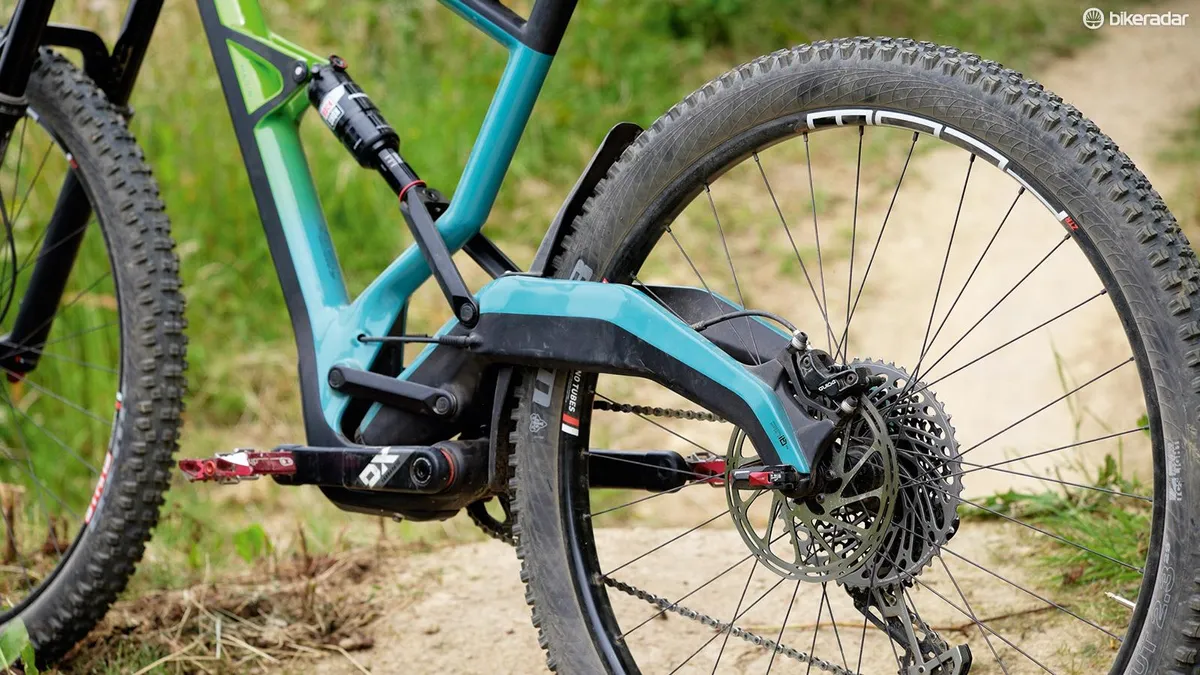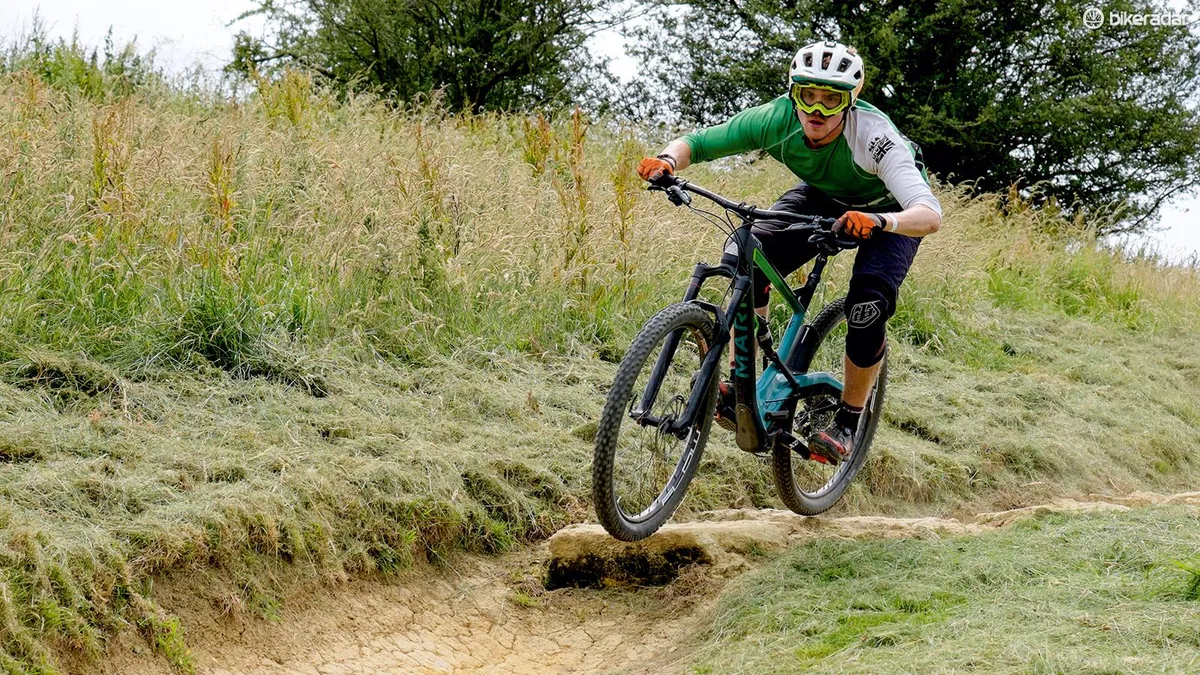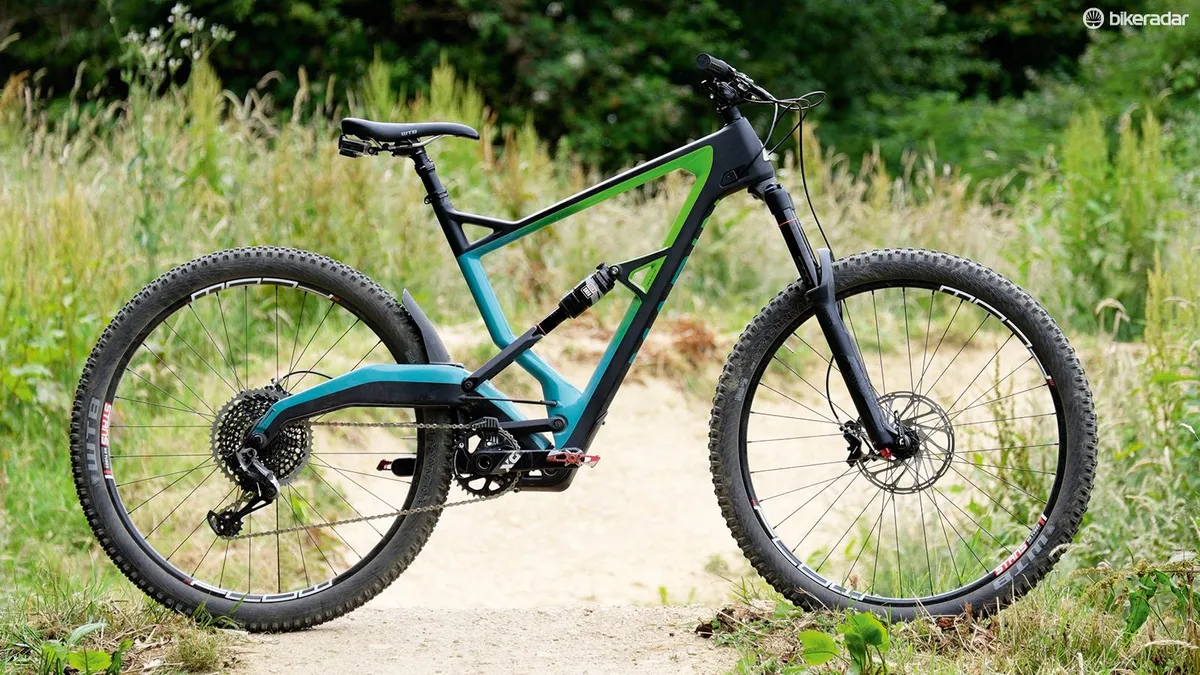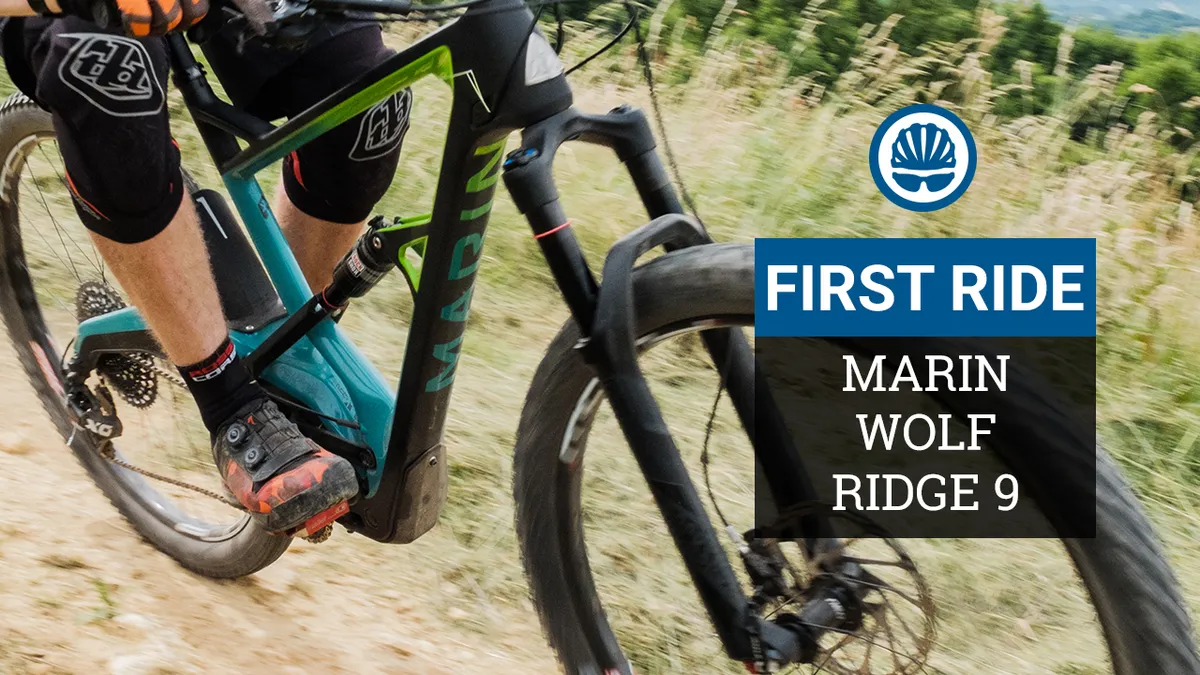Marin’s striking new Wolf Ridge 9 is hailed as a true do-it-all trail bike. Its innovative “R3ACT - 2 Play” suspension system, outsourced from a company called Naild, is claimed to provide unparalleled pedalling efficiency with superb terrain tracking. But how does it ride?
The frame is constructed from unidirectional carbon fibre, delivering 160mm of suspension travel. The carbon swingarm houses a pair of bushes and a seal — just like a fork leg — allowing it to slide up and down on a cylindrical stanchion, which in turn pivots on the mainframe just in front of the bottom bracket.
- Watch our video on how to get your suspension setup dialled
- Read our ultimate guide to mountain bike rear suspension systems
A horizontal link stops the swingarm from twisting and helps determine the motion of the rear axle.
While Stan’s wheels, a SRAM X01 Eagle drivetrain and Rockshox Lyrik fork are solid performers, the Guide RS brakes, inline Monarch Debonair shock and hard compound WTB tyres feel a little cheap considering the price point of £6,350 / €TBC / $TBC / $TBC.
Watch the Wolf Ridge and its suspension in action
Marin Wolf Ridge 9 spec overview
- Frame: Unidirectional carbon fibre, 160mm travel
- Fork: RockShox Lyrik RCT3, 160mm travel
- Shock: RockShox Monarch R DebonAir
- Drivetrain: SRAM X01 Eagle, 12-speed
- Wheelset: Stans NoTubes Flow MK3 on Neo Boost hubs
- Brakes: SRAM Guide RS, 200mm/180mm rotors
- Bar: Deity Blacklabel, 800mm
- Stem: Deity Copperhead Stem, 35mm
- Seatpost: KS LEV SIO, Custom Offset Head
- Saddle: WTB Volt
- Weight: 14.0Kg (Size L)

Marin Wolf Ridge 9 ride impressions
The way this bike pedals is uncanny. Whether cranking out of a corner or grinding uphill, the suspension barely bobs at all. This makes pedalling very efficient and responsive, without the need to toggle a lockout.
When turned down the hill, the lightly-damped suspension does a great job of ironing out most bumps, especially at speed, and delivers impressive comfort and traction through chunky trail chatter.
However, the design does have a few drawbacks.
Marin sent us a second test bike however, which did not creak and had less flex in the back-end
In order to keep pedalling efficient all the way through the travel, the Wolf Ridge 9 has high levels of anti-squat, which increase slightly the further the bike sits into its travel.
The downside of this is that because the rear wheel moves away from the bottom bracket significantly, the chain pulls and rotates the crank backwards when the suspension compresses. This is known as pedal kickback. All bikes have some degree of pedal kickback, but the Wolf Ridge 9 has more than most.
When riding, this normally isn’t noticeable, but when hitting sudden bumps, especially with the rear wheel locked up, the pedal kickback can be felt through the front foot, and the suspension sometimes struggles to react smoothly.
At the same time, I found the rear-end lacked support a little in slower compressions, such as berms and bomb holes, even when running as little as 25 percent sag.
On my first test bike the back-end flexed and creaked noticeably when cornering hard. This resulted in a vague, corner-smearing effect, and caused me to get stood up in tight corners.
Worse, though, is when the swingarm flexes, the shock moves with it. This causes the shock to bind up and choke when loaded up hard in corners, which bounced me off line. This also raises concerns about the longevity of the shock.

Marin sent us a second test bike however, which did not creak and had less flex in the back-end, and this bike was more predictable in the corners and the suspension choked less often too.
In some situations the suspension works brilliantly, but it still struggles when side-loaded hard or with a locked rear wheel, and the flex could still be felt when cornering aggressively.
Marin says it's working on ways to make the back-end stiffer and the shock less affected by flex, so watch this space.
When climbing seated, the set-back seatpost kicks the already slack effective seat angle back to 73 degrees. This puts your hips very far back, making it a chore to keep the power down and the front wheel from lifting on steep climbs. An In-line post would help remedy this, but would only steepen the seat angle by around 1-degree.
Other niggles with the Wolf Ridge include the lack of anywhere to put a bottle cage, and a rear axle that can be fiddly to install
The suspension is also fairly unreactive under power, so the bike lurches up and over bumps when pedalling seated. This is because the tension in the chain restricts the motion of the suspension when pedalling. This, along with the slack seat angle, caused me to stall on rocky climbs I'd usually clean with relative ease.
When pedalling stood up, the lack of bob is impressive, but with a reach of 476mm in XL the cockpit feels a little cramped by modern standards.
On the downhills too I found the geometry lets the Wolf Ridge down. The 66.5-degree head angle feels a little conservative when combined with the fairly short reach. Overall I found the riding position pretty uninspiring when tackling steep and tricky terrain.
This was brought into focus when I tested the Wolf Ridge against Whyte’s S-150 trail bike — another versatile long-travel 29er. I found the Whyte’s more progressive geometry and simpler suspension more forgiving and predictable when testing back-to-back on gnarly descents. And while bikes like the Whyte certainly can’t pedal as efficiently as the Marin, the steeper seat angles more than make up for this on technical, seated climbs.
Other niggles with the Wolf Ridge include the lack of anywhere to put a bottle cage, and a rear axle that can be fiddly to install. I occasionally sumped-out the low-slung down tube on severe steps too.
Overall, the suspension system does have some real advantages (if you don’t mind that pedal-kickback), but the execution in this current form could be better.


